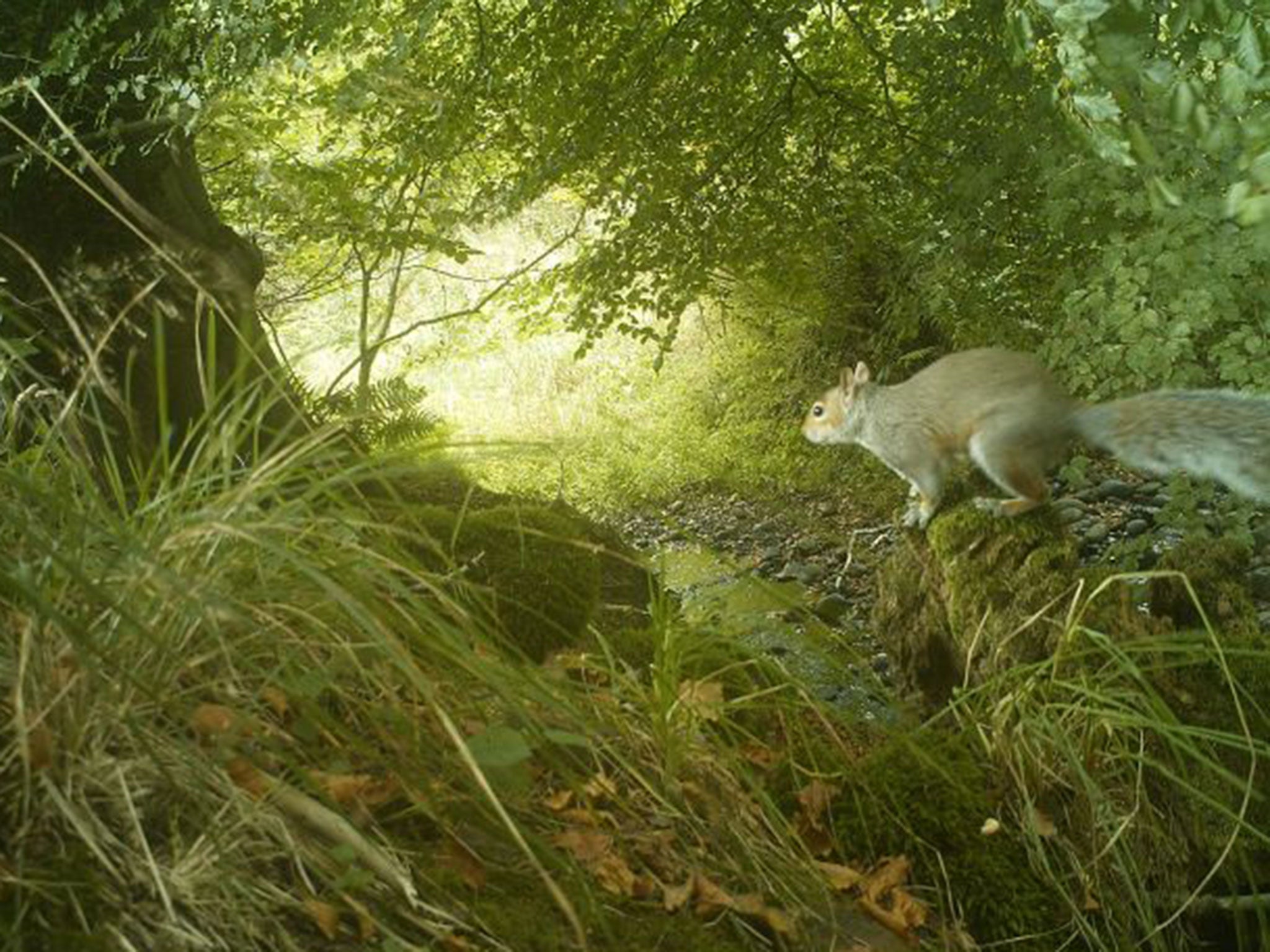Grey squirrels breach Highland Red Squirrel Protection Line
Exclusive: A recent National Trust for Scotland census showed red squirrels struggling for survival in some areas

Perched on a mossy outcrop enjoying the morning sunshine in woodland near the House of Dun, a historic Georgian mansion in north east Scotland, the grey squirrel does not seem to have a care in the world. But this idyllic-looking photograph, captured by a hidden National Trust wildlife camera, actually tells a much darker story.
When conservationists at the charity first saw the image on their computer screens, they knew that the grey squirrel was the first ever seen at the property – and was likely to be the advance party of an army which appears to have outflanked the strategic defensive line designed to protect the surviving red squirrel populations of the Highlands.
The breaching of the Highland Red Squirrel Protection Line, which was created by conservationists in 2009 and stretches coast-to-coast across Scotland from Montrose in the east to Inveraray in the west, poses a “very grave threat” to red squirrel populations further north, The National Trust for Scotland (NTS) warned.
The charity has recently conducted its second census of squirrel populations across Scotland, gathering reported sightings of reds and greys from staff who work in and around its properties. The results paint a mixed picture, showing that in some areas the trapping and culling of grey squirrels has been successful – while in others reds are struggling for survival.
Lindsay Mackinlay, nature conservation adviser at NTS, said that while some of its properties such as Falkland Palace in Fife and Branklyn Garden in Perthshire had seen the return of red squirrels, there was also worrying evidence that the non-native greys were “expanding their range” in other parts of Scotland.
“We’ve acted to hold back grey squirrels in key areas where we think our efforts will make a real difference, but in others, we’ve had to painfully watch as the reds have gone and the greys have arrived,” he added. “NTS remains committed to conserving the red squirrels on its land as we believe that our woodlands would be so much the poorer without them.”
The advance of greys up the east coast of Scotland is particularly worrying to squirrel conservationists as it could undermine ongoing efforts to eradicate them from Aberdeenshire, where they have survived since being introduced – either accidentally or by someone acting illegally – in the 1970s.
“A big expansion from the Montrose direction towards Aberdeen would introduce a whole new flow of greys and seriously compromise all the work in Aberdeenshire,” Mr Mackinlay said. “This is of major concern to NTS and we would encourage more funding in the Montrose and Angus area to ensure this flow is stopped as soon as possible.”
Fewer than 120,000 red squirrels remain in Scotland, around 75 per cent of the total UK population, and conservationists believe that unless action is taken to control the spread of greys they could disappear from the UK within a generation. As well as trapping, one possible solution could be the reintroduction of natural predators such as pine martens.
At the forefront of conservation efforts is Saving Scotland’s Red Squirrels, a partnership project led by the Scottish Wildlife Trust and supported by a network of more than 400 landowners covering 4,000 square kilometres. The relentless spread of the greys has led the NTS to appeal for landowners in remote parts of the north and west Highlands to come forward, in case their woodlands would make suitable habitats for the introduction of red squirrels.
“We need an area where greys will find it extremely difficult to reach should we fail to stop them along the Highland boundary fault and rid them from Aberdeenshire,” Mr Mackinlay said. “In essence, we need long term, safe refuges for red squirrels as a back up.”
Subscribe to Independent Premium to bookmark this article
Want to bookmark your favourite articles and stories to read or reference later? Start your Independent Premium subscription today.

Join our commenting forum
Join thought-provoking conversations, follow other Independent readers and see their replies